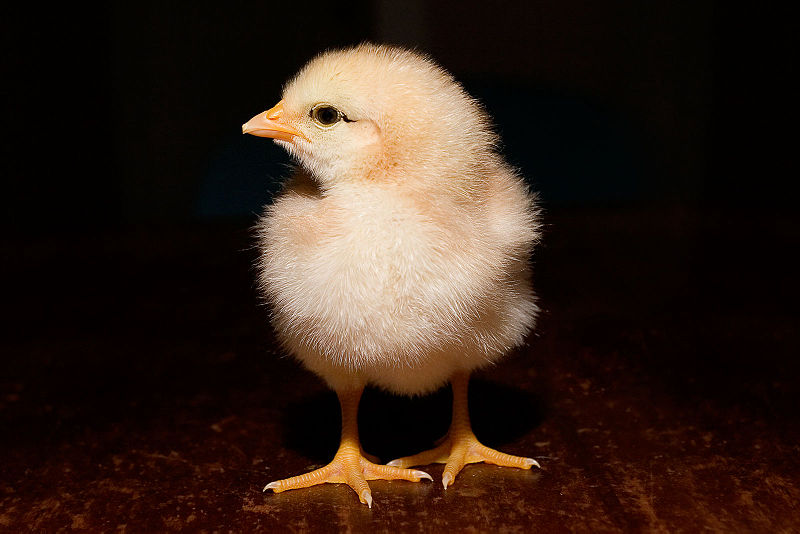Consider the Chicken
josh
Posted on August 27th, 2012

Consider the chicken. Unlike the lobster, a wild animal whom we all like to kill in person, the chicken arrives to use ready to cook. We all know what a chicken looks like, if only from TV; it walks around and says “buck buck buck.” And we all know what it looks like, featherless and decapitated, in the meat aisle. We are even intimate with its deconstructed form, having eaten all its constituent parts a thousand times, breaded and spiced and fried up, or slathered in hot sauce and butter, or cooked in a delicious tomato sauce as chicken cacciatore.
It’s the connection that is the problem. Chickens are treated about as badly as any animal we eat – at least the cheap chicken that we get at the supermarket for $2 a pound, or at Bojangles for considerably more. Even with my abiding interest in eating animals, I tended not to think too much about chicken. But I have tried to go visit each of Meatopia’s sponsors, and that meant going to visit Bell & Evans in Fredericksburg, Pennsylvania.
I had been told that Bell & Evans was the most advanced and humane of all the major chicken producers, the Creekstone of poultry. But to honest, I expected to find an avian Potemkin Village, where a few chickens were caressed by bearded Mennonites while the machinery of destruction thundered behind the scenes. What I found instead was both heartening and depressing. Bell & Evans is as humane as advertised. But the standard chicken operation, which supplies my favorite quick-service restaurants, is, in contrast, far worse than I could have imagined. Aside from the standard PETA snuff videos, the dead chickens in commodity operations are cooled down by washing them in icy chlorinated water, a bloody broth that, in addition to everything else, melts away much of its subcutaneous fat. Bell & Evans, on the other hand, rates a 3 on the Global Animal Partnership’s 5-step Animal Welfare Rating standards used by Whole Foods Market. That means no cages or crates, enhanced environments, and outdoor access. The chickens are air-chilled, which keeps them clean and juicy. It’s weird to see thousands of them hanging on moving hooks, but chickens are going to come from somewhere; that place is bound to have a lot of dead ones. I was also impressed to see the chickens gently put to sleep in a kind of gas chamber filled with carbon dioxide. They get sleepier and sleepier, and the next thing they know they’re dead.
I even got to meet them as chicks.
bell and evans chicken from Ozersky.TV on Vimeo.
The experience did the same thing to me as Creekstone’s. I felt great about eating that chicken (I buy it every week at Whole Foods) and horrible about the alternative. Of course, it’s not like I’ll never eat at Bojangles again. But as Jules says at the end of Pulp Fiction, “I’m trying, Ringo. I’m trying real hard.”